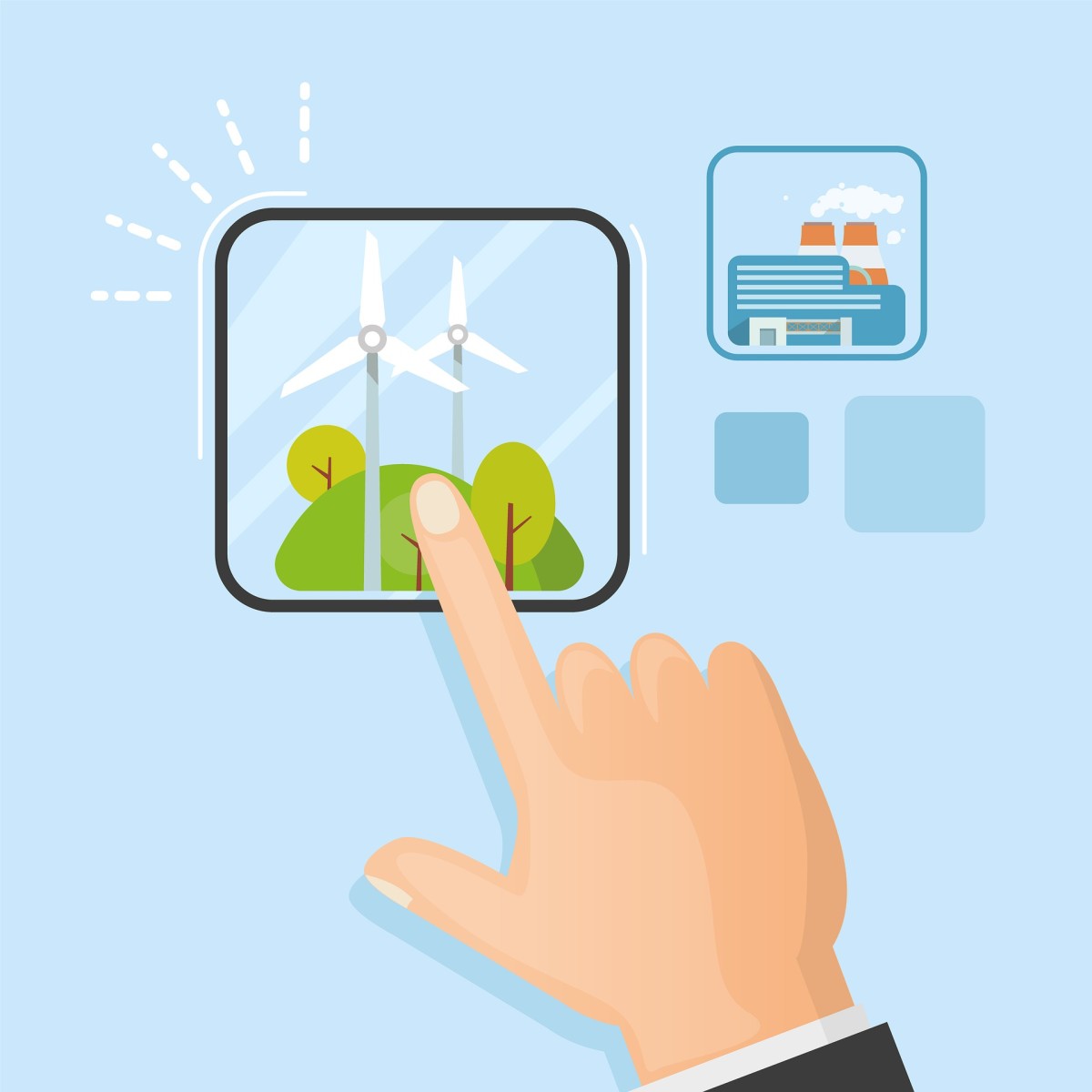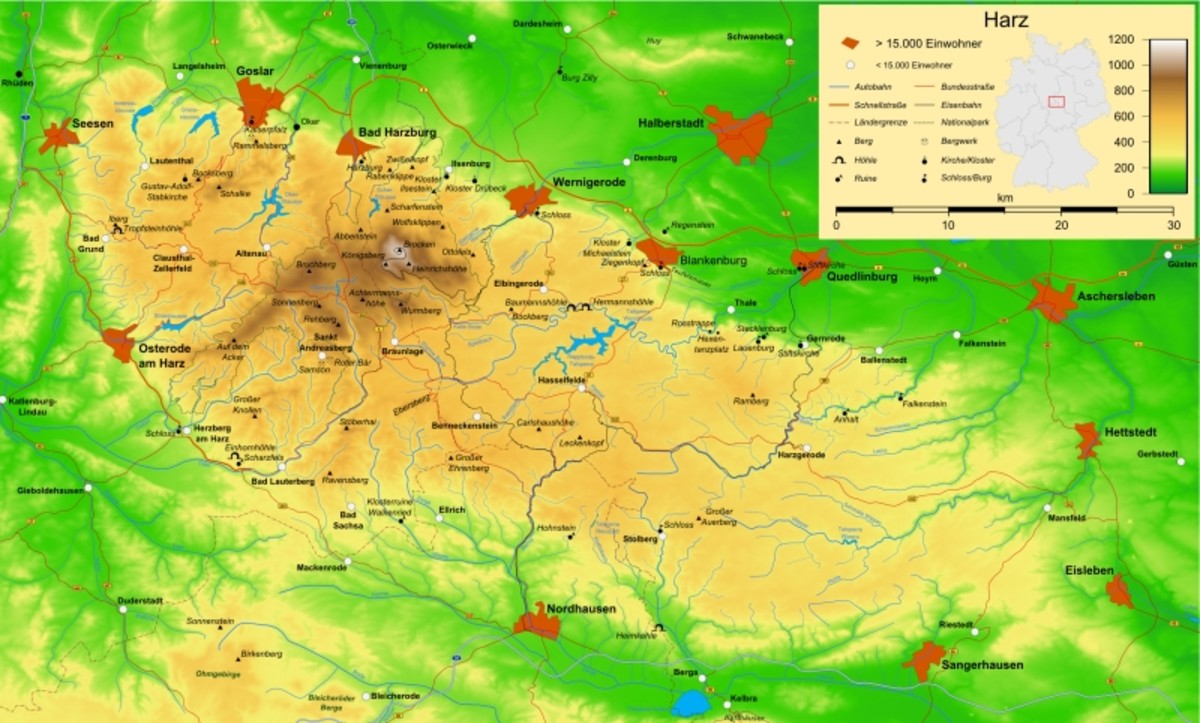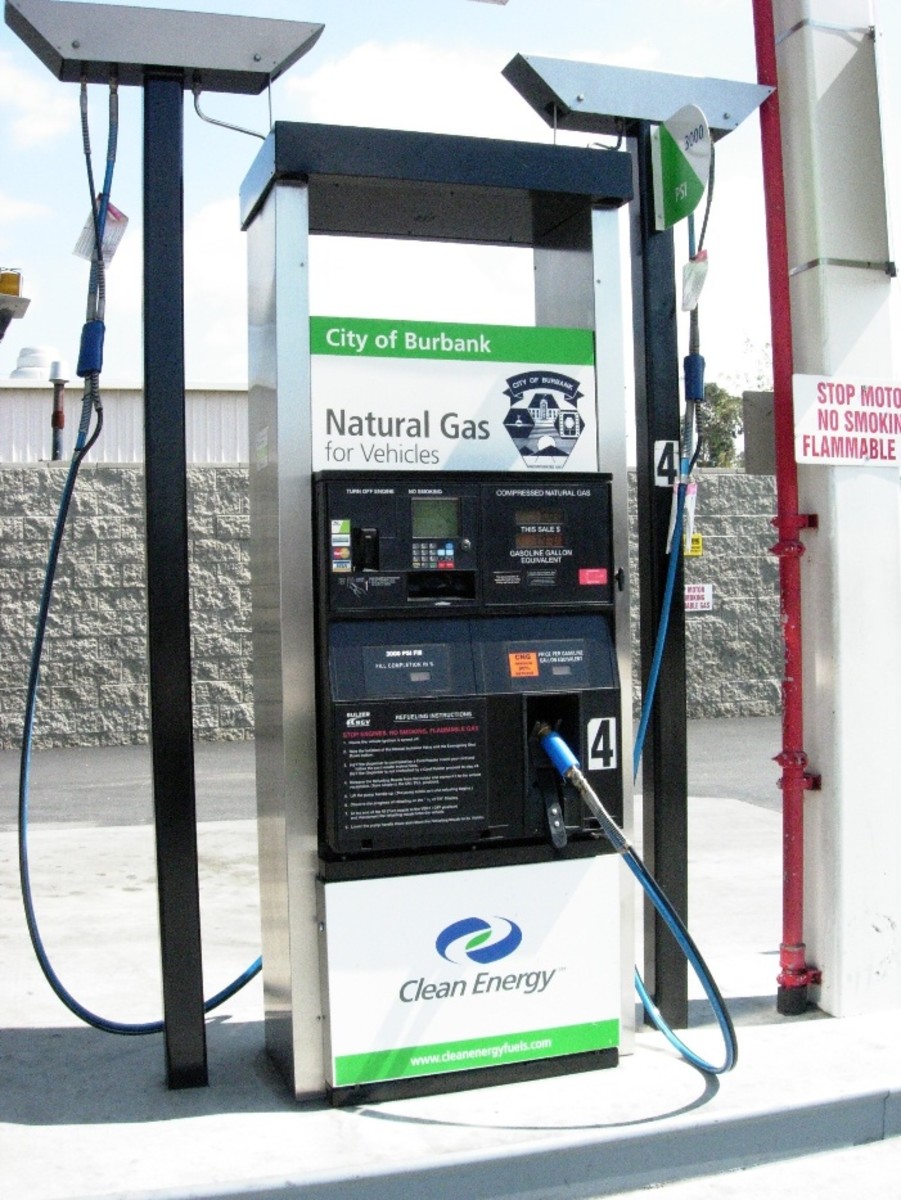Powering Up a City
Portland, Oregon
Portland, the City of Roses, sits 60 miles east of the Pacific Ocean at Oregon's most populated region, the Willamette Valley. It marks top five cleanest city in America. Why? Portland utilizes multiple renewable or clean resources that may seem strange to other parts of the country. Geothermal plants cover the state, natural gas wells are being developed throughout the county… Portland is a densely populated and developed city but meanwhile clean and natural. The government of Oregon are constructing plans and projects of clean-resource usage to maintain this situation.
Hydroelectric Power—Power of Aqua
Since 1889, Portland has utilized the Willamette and Columbia rivers to build dams that powered up one of the most populated city on the west coast. With the Pacific Ocean bordering the left and two rivers streaming through on the right, God has given Portland the perfect geolocation to apply hydroelectric power. Even today, it still plays a paramount part in electricity production of Portland.
Located in the southeast and central cities of the state, “Portland's first geothermal power plant began operating in 2010 at the Oregon Institute of Technology in Klamath Falls.” Used as a constant source of energy for power plants and factories, geothermal energy provides more renewable and clean energy onto the map.
Hydroelectric power has become the most commonly used power in Portland. It is the origin of virtually the entire city of 653,115 people's electricity. The Dalles Dam on the Oregon/Washington border, with a capacity of 1,779.8 MW, maintains not only Portland but most the State's energy. Since installation, the dam has generated greater than 9.2 billion kilowatt hours of electricity.
A dam is used to retain water from flowing and releasing it to generate kinetic energy. Built on locations with numerous elevations, it allows a small amount of water to create a sufficient amount of energy. It required little water as the fall creates enormous kinetic energy, enough to spin the turbine.Water flows through the individual tubes of the dam generating a huge flow of kinetic force. Water then travels through the curved blades, spinning the turbine. The generator, which is attached to the turbine, also rotates. This action generates an electric current. As the water passes through the spinning turbine, it is made to exit as fresh water continuously falls through the dam to support a continuous flow of water like a cycle. “The electricity is conveyed into a distribution tower and transmitted all over the city.”
As a renewable resource,
- Hydropower is one of the most efficient and environment-preserving resources of energy.
- With 90% of convert rate and a cheap cost of 0.005cents/Kwh, it should be the most widely used resource in Portland.
- Although a large dam like the Dalles Dam would cost “$1050-7650/Kw to build, the financial cost of maintenance would only cost $2-2.5/Kw.”
- As a populated and river-bordered city, we should unquestionably utilize such efficient resource.
Because of the positivities listed above, hydropower has become more and more common throughout the world. Washington State is home to the biggest dam in the U.S, the Grand Coulee Dam, generating more than 21 billion kilowatt-hours of electricity each year. Oregon is one of the top three hydroelectric power producers in my nation, accounting for more than 12% of U.S. hydroelectric generation in 2017. However, hydropower is fastidious for places--places with limited reservoirs or natural sources of water will be hard to get hydropower, as long-distance delivery of electricity is expensive and challenging.
Globally, electricity from hydropower grew by 5.3 percent between 2009 and 2010. Famous for its 21,000-megawatt production, the Three Gorges Dam of China is the leading hydropower plant. Norway, during 2010, got 67% of its overall power (including coal) from hydroelectricity. However, places like Central Africa or the Central United States would lack hydropower, since they are in lack of water.
As mentioned, the advantages of hydropower include cheap costs, renewable, efficient, and sufficient. Anywhere with big bodies of water or reservoirs are fitted to apply hydropower. Nevertheless, setbacks are to be carefully considered.
- Dams will cause a rise in water-level, resulting in dangerous floods in certain seasons.
- Animal habitats will be destroyed, while fish and other animal populations are forced to move.
- It is costly to install and delivering electricity to the mainland would also require financial support.
- Although it produces little gases, it has tremendous potential for disasters.
- “Dams may get filled with dirt, which blocks the flow of water, causing floods or mudslides.”
- Building reservoirs require an enormous field of land, meaning that people would have to make way for construction and move elsewhere.
- Installing the dam and transporting electricity would require a huge amount of money, causing some people to doubt whether if it’s worth the pay.
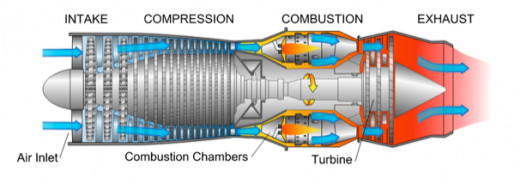
Natural Gas--Ancient Energy
As the cleanest fossil fuel, natural gas mainly utilizes methane gas. The stability of natural gas known throughout the world characterized it as one of the most accessible heating sources. Since methane is solely one carbon atom bonded with for hydrogen atoms, it is easy to create and apply. Originating as microscopic organisms living in marine environments eons ago, natural gas is formed by the compression of ancient lives. They absorbed energy from the Sun, nutrients, and other nutrients which was stored as carbon molecules in their bodies. After getting buried deep into the sediments and mud, heat and pressure finally converts them into gas. Some gas may seep on to the surface through cracks in the ground, while other gas molecules form “ponds”, waiting to be unearthed.
Natural gas is used to generate electricity in a variety of ways. The intake collects then transfers the gas into the compression&combustion chambers where the gas is heated and the water vaporized. The vapor rotates the turbine, spinning them and generating mechanical energy, which is stored and converted to electricity in the transformer. Finally, products of this process (CO2 or other gases) are expelled through the exhaustion tube.
- Combustion engines and gas turbines are relatively easier to turn on, making it a simple way of generating electricity.
- Electricity generated is carried through transmission lines all over the local area, and small stationary on-site power plants are making transporting electricity easier.
- In Oregon, natural gas remains the second most common energy source. With price $3.37/thousand cubic feet, it is notably cheap.
- Natural gas has the potential of producing 30% less GHG than fossil fuels, while considering the process of use.
These machines are growing in popularity, due to their simplicity and the use of natural gas.
- “However, it is less effective than large power-generating power plants, making it more fitting for constant heat-generation than electricity-generation.”
A significant reason for why it is inefficient is, as mentioned, carrying the electricity.
2. Some electricity is lost during long-distance transportations.
The only solution to that problem is to build multiple onsite power plants, costing more need for land and money.
3. They create damages to the environment.
“Although the exhaustion created in the process is half the amount of other fossil fuels, emissions from pipeline leaking also generate GHG. Unsealed pipelines would cause not only the potential to explode but also causing twice the amount of GHG emission than coals.”
Portland Natural Gas Transmission System (PNGTS) is a pipeline that spans New England from the Canadian border to pipeline connections in New Hampshire, Maine, and Massachusetts. Created by the largest corporations in North America, this pipeline served high-quality natural gas for gas utilities, industries, and electricity generation since 1999.
Stretching almost across America, this securely-built pipeline is proof that natural gas is an indispensable part of modern society. “168 million cubic feet of natural gas transported each day, more than 573,000 New England homes are kept warm.”10 Natural gas is a common source of energy all over the United States, being the source of 33% of all energy generated in the country.
All across the world countries use natural gas, no matter for heating or powering. “America consumes the most natural gas, with the estimated amount of 739,500 million cubic meters/year. Around the whole world, people consume around 3,670,400 million cubic meters/year.” Some countries, especially those in Africa, use almost none. That might be due to their geolocation, because natural gas comes from natural gas reserves that sit underground, just like geothermal energy. The lack of natural gas consumption may also be caused by the countries’ economics, since building the engines and transporting the electricity is costly.
Geothermal Energy--Truly Natural
One of the most efficient and money-saving ways of moderating temperature is geothermal exchange. Based on the usage of geothermal energy, this technology requires no conversion or intermittency. Found 20ft below the surface, the heat source/sink is used to create a balance of temperature similar to that of Earth's natural flow. In the winter, Earth acts as a heat source for us to raise the temperature. In the summer, it acts as a heat sink to take in extra heat and release cold temperature. This process is called the geothermal exchange. Of course, that was to show you how powerful and significant geothermal energy can be.
Geothermal energy can generate electricity in three may ways: dry steam, flash steam, and binary cycle.
Just like most other renewable resources, there is a well to collect the steam, a tank to collect the steam, a turbine to generate kinetic energy, and a generator that converts kinetic energy to electricity. Dry steam power plants use steam from Earth (note: not vaporized by machines, but naturally vaporized) to rotate the turbine. It is pumped directly from Earth into the generator, where it spins the turbine.
Binary cycle power plant, a newly invented technology, serve on the water with lower temperatures of about 107°-182°C. These plants heat working fluids, organic compounds with low boiling points, with water. The turbine uses the steam to rotate, while the water flows back underground. Because water and steam never mix, there are little or no air emissions.
The flash tank collects boiling and condensed water greater 183°C from the production well and extracts it to a reduced pressure while the water vaporizes and moves into the tank. The steam is then extricated from the water to be used. While twirling the turbine, water vapor condenses into liquid and runs back to the ground through the injection well, where Earth swiftly boiled it for reuse.
Kinetic energy is converted into electrical energy by the generator. Enough to power rural areas, geothermal power is usually found “combined with other energy sources to form a modular power-generating center” that can be used to raise the amount of electricity.
- The greatest benefit of geothermal energy is that it is renewable. The only care is to not inject an overload of cold water which would cool down the rocks.
- If controlled, energy would be almost unlimited.
- No external energy source is required since Earth itself acts as a source of energy.
- Particularly to Binary Cycle power plants, no pollution is emitted.
- It requires little space, since the development is more towards underground than around.
- Maintenance and cleaning require less than one-third of the total “cost, making it very economical over time. Saving over 80% of the cost for fossil fuel-combustion, it is suitable for all citizens to use.”
- The worst downside of geothermal energy is that stations can only be installed in certain areas, including locations that have the hot rocks to drill through easily and be in a reasonable depth as well. That means multiple spots have to be built within a small area for enough energy to be produced.
- While there are financial benefits of geothermal energy, most of its negativities are also finance-related. Investments toward geothermal construction are huge.
- Hazardous minerals and gases may escape during the drilling and harm local agriculture and water sources.
- Drilling so deeply into Earth would also affect the quality of the soil, mineral, and groundwater within the area.
- Since geothermal plants cannot be moved once installed, it can only provide power to that area, as transporting electricity would be costly, time-consuming, and energy-wasting. But if too many are built, environmental issues will also rise.
Based on a research of 2018, geothermal energy made up less than 1% of Oregon's power resource. Although it represents such an irrelevant part of Oregon, the state government is working on improving and utilizing binary-cycle technology and increasing the role it plays in Oregon. As a central source of heat, they are installed in Oregon for providing heat rather than electricity. The Oregon Department of Geology and Mineral Industries created an Interactive Map of Geothermal Springs and Wells in Oregon to accurately understand this technology and unearth its potential. As mentioned, the placement of geothermal power plants depends on the geological conditions of that area that not all areas are suited with.
“As of 2008, more than 103 new projects are being built in 13 different states.”16 Looking at figure 15, we can see that most underground heat sources are located in the West of the U.S. Therefore, future geothermal energy uses in the United States will be carried on more in the West. At this rate of development, geothermal production in the United States could exceed 15,000 MW by 2025.
Developed countries are focusing more on geothermal energy usage. America has 2 of the biggest “geothermal power plant complexes in the world, generating up to 2000 MW of energy each year. Italy’s Larderello Geothermal Complex provides 26.5% of the regional energy needs.”
Although it may seem like geothermal power is not yet accepted in the world, data shows that countries all around the world are developing habits of using clean, renewable energy as such.
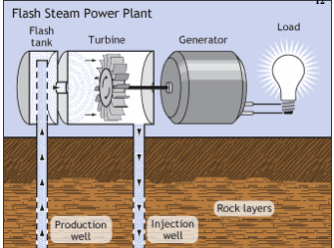
Hydropower: Favorite Choice
As a coastal city with two rivers streaming through, no others are more appropriate than hydropower. A large population in a cold environment would mean a massive requirement of electricity, either for high-rises or heat. Just like other megacities, battery-operated cars and charging stations are ubiquitous. That would boost the demand for electricity more than ever in history. With the city facing such need, hydropower is the only source to suffice. Cheap for residents, it is both efficient and economical when used widely. Also, building dams may regulate water flow and create a more pacific river, giving those that live on banks a safer condition. Unlike natural gas, which emits harmful gases and can diminish the Earth from natural compounds, hydropower is clean, renewable, and gentle to the environment. While geothermal energy is less efficient, more expensive, and grounded dead, hydro-plants can generate a tremendous supply of electricity that can expand extensively, powering all electronic mechanisms in a broad domain. All in all, Portland is made to use hydroelectricity--it has natural reservoirs, colossal space, and a large population that depends on electricity.
It is an exciting thing to do, thinking of the future. Portland's Water Bureau also set a goal for the bureau to achieve and maintain a capacity of 400 kW of renewable energy, including micro-hydro facilities. As people begin to realize the importance of renewable resources, more and more are willing to invest money for building newer power-plants, developing innovative technologies, and expanding the concept. The City of Portland, Oregon, and Multnomah County have declared to achieve the aim of generating not just electricity, but power 100% from renewable resources. At such pace, it is judicious to say that Portland will become a leading city of renewable energy in the near-future. A likely prospect is the elimination of coal and natural gas.
As two of the most influential energy resources, phasing out them are unquestionably difficult. Coal-combustion and natural gas usage produce excess GHG, thereby warming up our globe. Portland, resolute to eliminating the two, will face challenges. The government will spend vast expenses on building more renewable power-plants to fill in the gap of losing coal and natural gas, and sadly, the economy will likely fall due to the massive spending and the lack of electricity. No changes come quickly, so Portland will have to endure a time when not adequate electricity is generated to power all infrastructure.
Looking further, however, the use of 100% renewable resources such as hydroelectricity would contribute to restoring the natural order, mending the ecosystem, and prolonging the continuance beauty of our blue planet.

